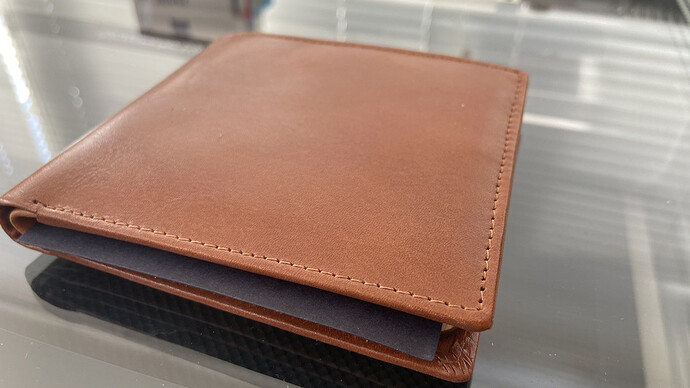So if I have a weird shape like that, I tend to use a photo. It’s a highly one off system, but it goes like this:
I lay my thing out on the floor, sometimes on a piece of paper to enhance contrast.
I stand directly above it and take a photo from standing height. This reduces the phone camera distortion.
I take that photo into inkscape. I trace it either with the trace bitmap (if it’s a nice clean image) or just manually with the pen tool.
Ditch the photo.
Now, measure your thing (wallet) very carefully with calipers. Scale your outline to match that size.
Now you have a perfect scale vector outline of your odd object.
Overlay your engraving art on the outline so that it’s placed just how you want it.
Save that whole mess and throw it in the UI.
Tahdah, jig plus art.
If alignment isn’t super critical (like 1-2 mm accuracy is ok) I tend to simply lay down a piece of cardstock (or paper, or even stick blue painters tape directly to the bed) and lightly score it with the outline. then I lay the wallet exactly in the resulting scored area.
Now, it’s important to ignore any and all GF camera images from this point on. Trust your jig line. The camera will lie to you, don’t be fooled. Do not move the art or the cardstock.
Turn off the score line in the UI, turn on the engrave, set the material thickness as appropriate, and go for it.
That’s it.
- Be careful when doing “edge to edge” engraves. If your alignment is off by a little then you’ll notice it. Better to design it so your engraved image is larger than your actual wallet, so the engrave goes truly edge to edge.
Also @cynd11 has a solid point.
